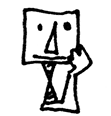In Indian tradition, energy is considered a universal life force, karma is the law of moral cause and effect, and reincarnation is the cycle of repeated births of the soul until spiritual liberation is attained.
In Indian spiritual traditions such as yoga, Ayurveda, or spiritual sciences like Jyotisha, energy is seen as the fundamental force of life that permeates the entire universe and everything in existence. This energy is often referred to as prana, the universal life force or vitality that flows through the body, mind, and environment. Energy within the body is perceived as a network of channels (nadi) through which prana flows. It can be subtle (spiritual) or more physical, but it is definitely dynamic—constantly changing and transforming, and affecting our health, emotions, and consciousness.







